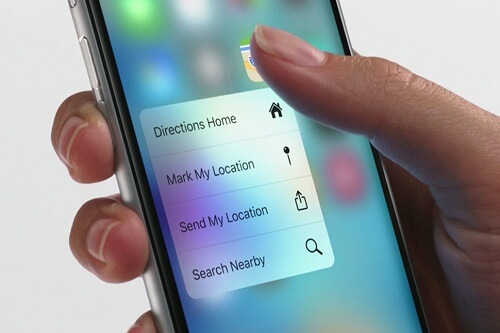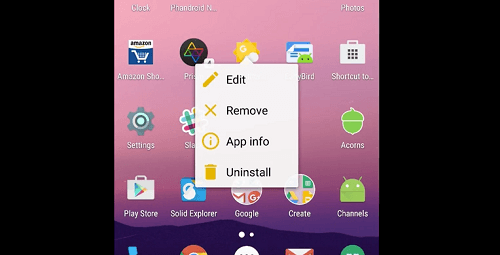3D Touch is a new technology on smart phones. Compared with Force Touch, it has another level of sensitivity, though they do the same thing. In today's article, we will have an introduction of the 3D-Touch, so that you can have a clue about what it is.

Part 1. Brief Explanation of 3D-Touch
By measuring your touches and presses, the handsets can show you the shortcuts. In fact, the sensor can do more than that. By pressing an email, a website or a picture, you are allowed to preview them; and by holding the keyboard, you will have a touchpad. Of course, there are more.
The technology is first used by Apple last year on iPhone 6/6s. This has really changed the way we use a phone. Though most Android users are still on 6.0 or earlier version, Google has its Android N with 3D-Touch on the way, which will be detailed in the next I/O developer event.
Part 2. 3D-Touch on Android
It’s said that Google is just copying Apple. There are quite a few arguments about it. But the truth is that 3D-Touch is a strong trend. For example, Google has already developed 3D-Touch features for Google Drive (iOS version) and Chrome on iOS, which is done a few days after the release of iPhone 6s. Considering its consistency for user experience, the company won’t let the Android fans down. Of course, Google can simply ignore the new function since 3D-Touch is not so much a revolution that everybody has to keep up. Yet it did follow the tide and offer its users great convenience.
A developer simulates this function, which is activated by long presses and swiping down on the icon because there is no hardware supporting this technology yet. For now, 3D-Touch has only been used as a shortcut to the features of the apps on the main screen. Seemly, the peek-and-pop feature will not be on Android, according to Google's documentation. But, some simple information of widgets can be shown with pressure—weather and sports scores.

Part 3. What 3D-Touch May Support in the Future
Apparently, the new feature won't get us too excited for the information above. And, ahead of Google, some Android OEMs has developed their own 3D Touch-like functionality, even though the phones do not have the native code to support them. But, hopefully, the usage situations of this new sensor will be enriched. Though Google's idea may be considered infringing Apple, it is believed to be a great start for smart phone.
Another opinion which is worth our attention is that some times users can be clueless about when to press on the screen and what will happen. It is possible for most people to know how and where to use this function. But, when we are using some unpopular apps, there can be some confusion about whether it works. Guess we will have to keep trying.
